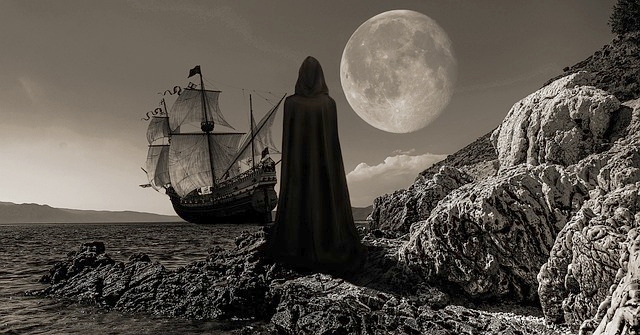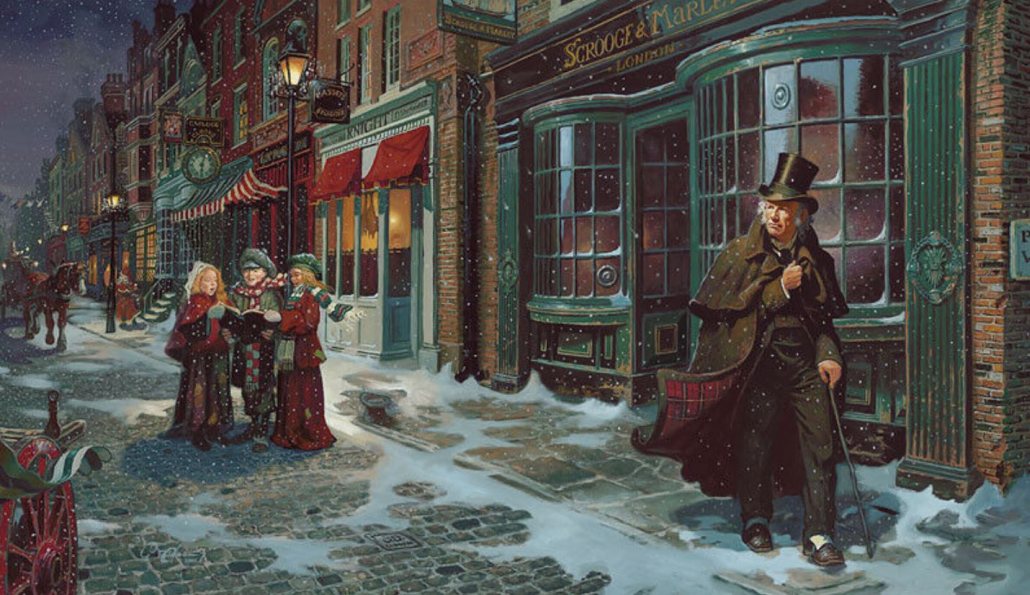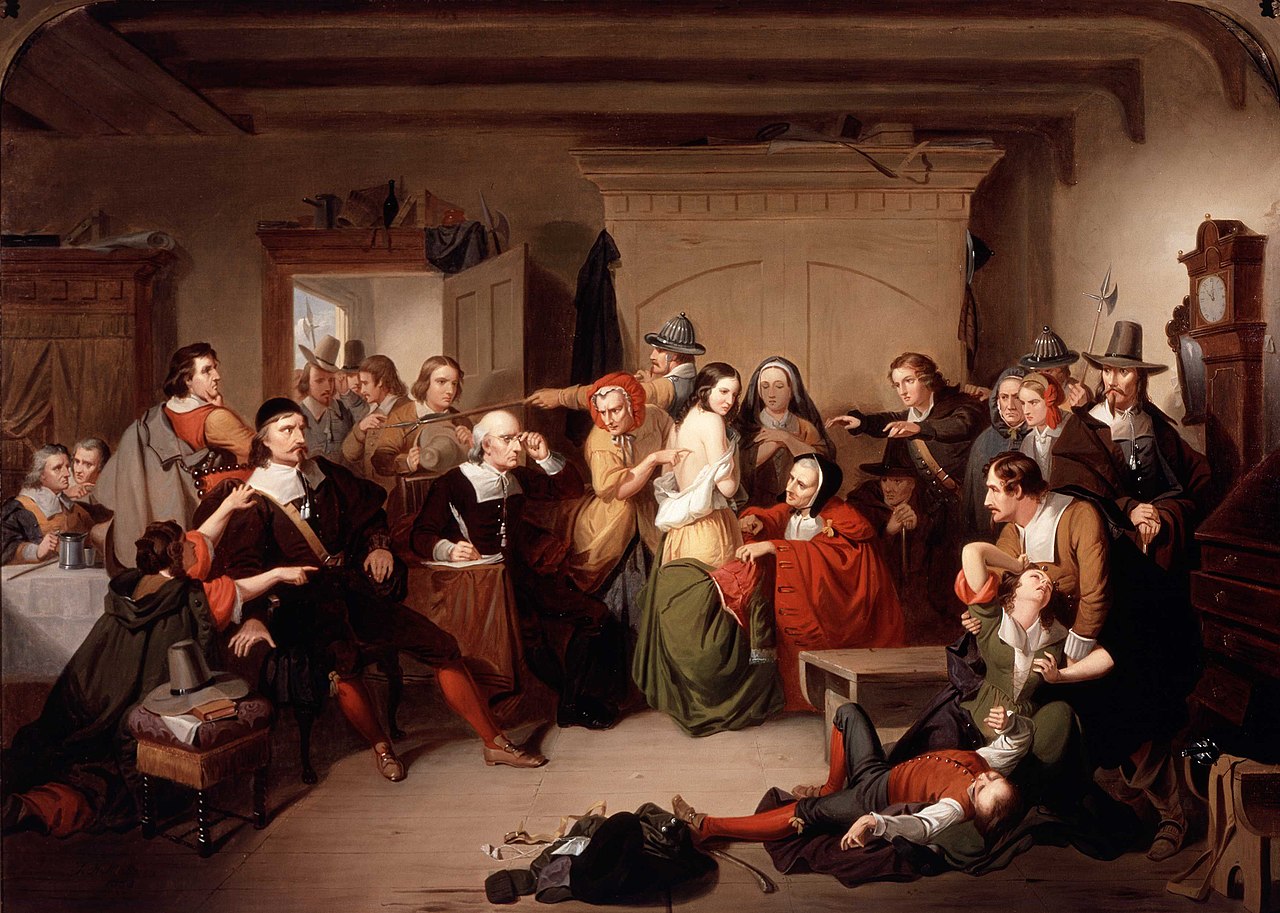
The Salem Witchcraft Trials started in the North America Continent, at Salem Village in the Massachusetts Bay Colony, now in The United States of America; (currently Danvers, Massachusetts), in February 1692 and ended in May 1693. Salem Village was a small, poor farming community of about 500 persons. The Massachusetts Bay Colony was under the possession of Great Britain, and in 1692 and 1693 under the reign of King William III and Queen Mary II.
More than 200 people were accused of witchcraft, also called “The Devil’s Magic” at Salem Village. Thirty were found guilty and 19 of whom were executed by hanging. Those 19 were 14 women and 5 men. There was another man, Giles Corey, who was pressed to death for refusing to plead innocent or guilty. Furthermore, at least 5 other people died in jail. Arrests for witches went from Salem Village to Salem Town ( a bigger territory with more inhabitants and a prosperous, thriving port about 10 miles away (16 km) from Salem Village: Salem Town evolved into modern day Salem, Massachusetts); arrests spread notably in Andover and Topsfield as well as numerous towns beyond. The hangings took place in Salem Town.
The witch jail was the dungeon for those accused of witchcraft and the inmates there were starved, tortured, and subject to inhumane conditions. How the accusations began: In January of 1692, there was the Reverend Samuel Parris. He became the first ordained minister of Salem Village in 1689, and was disliked because of his strict ways and greedy nature. There were quarrels. Some of the Puritans thought the Devil played some type of role in all this. His daughter, Elizabeth, also known as Betty, age 9 and her niece Abigail Williams, age 11, started to experience “fits”. These children screamed, threw things, uttered peculiar sounds, and contorted their bodies into weird positions, and crawled under furniture. A local doctor, William Griggs, blamed supernatural forces. Another girl, Ann Putnam, daughter of Thomas Putnam and Ann Putnam Senior, age 11, underwent similar physical characteristics. The primary instigator of the Puritan Salem Witchcraft Trials was Elizabeth Hubbard. She was 17 years old when these trials started in the spring of 1692. Elizabeth Hubbard was an orphan and the maid servant of Doctor William Griggs, who employed her and he had told her lurid stories of the 3 girls having bizarre, what we would call today ‘paranormal’, fits. Doctor William Griggs was also the uncle of Elizabeth Hubbard. Elizabeth Hubbard experienced her first alleged fit that was recorded on February 1, 1692.
There are researchers, decades ago, who believed the fits of these 3 young girls were caused by eating the poison of ergot of rye, and not knowing about it. Ergot is a fungus that grows on rye and less commonly on other crops as wheat. Victims of ergot have been known to suffer paranoia, delusions, and hallucinations, twitches, and spasms, cardiovascular trouble, and stillborn children. Also, ergot is known to seriously weaken the immune system. The fungus thrives in warm and cold climates; such climates are similar to the swampy meadows in Salem Village where rye was the staple grain during the spring and summer months. The very powerful hallucinate called LSD, Lysergic acid Diethylamide, is made from the ergot fungus.
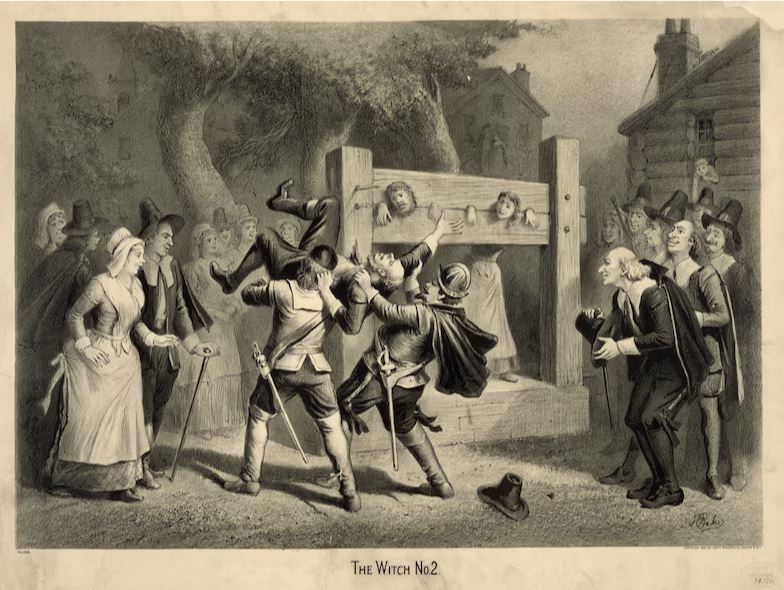 On March 1, 1692, there was a very extensive set of questioning by the local magistrate; the heated interrogation went on for several days. The first accuser of the Salem Witch trials, who was also of legal age to testify under oath while in court was Elizabeth Hubbard. Her testimony for witchcraft against many people actually “paved the way” for the other younger girls to legally accuse people of witchcraft. Under coercive pressure under magistrates Jonathan Corwin and John Hathorne, on February 29th,1692, the 3 minor age girls blamed 3 women for afflicting them: Tituba, the Parris’s personal slave, Sarah Good, a homeless beggar, and Sarah Osborne, an elderly impoverished woman. Tituba was a Caribbean; from the South America West Indies. Biologically, she has been described as an African, others described her as a Native American Indian. She may have had a mixed racial and ethnic background. Tituba was accused of influencing the girl accusers as Abigail Williams and Betty Parris with tales of enchantment from the book on witches and witchcraft called “Malleus Maleficarum”, written by the Catholic clergyman Heinrich Kramer (under his Latinized name Henricus Institor) and first published in the German city of Speyer in 1486. These stories of sexual encounters with demons, swaying the minds of men, and fortune telling are said to encouraged allegations by the young girls against Tituba.
On March 1, 1692, there was a very extensive set of questioning by the local magistrate; the heated interrogation went on for several days. The first accuser of the Salem Witch trials, who was also of legal age to testify under oath while in court was Elizabeth Hubbard. Her testimony for witchcraft against many people actually “paved the way” for the other younger girls to legally accuse people of witchcraft. Under coercive pressure under magistrates Jonathan Corwin and John Hathorne, on February 29th,1692, the 3 minor age girls blamed 3 women for afflicting them: Tituba, the Parris’s personal slave, Sarah Good, a homeless beggar, and Sarah Osborne, an elderly impoverished woman. Tituba was a Caribbean; from the South America West Indies. Biologically, she has been described as an African, others described her as a Native American Indian. She may have had a mixed racial and ethnic background. Tituba was accused of influencing the girl accusers as Abigail Williams and Betty Parris with tales of enchantment from the book on witches and witchcraft called “Malleus Maleficarum”, written by the Catholic clergyman Heinrich Kramer (under his Latinized name Henricus Institor) and first published in the German city of Speyer in 1486. These stories of sexual encounters with demons, swaying the minds of men, and fortune telling are said to encouraged allegations by the young girls against Tituba.
Tituba was very vulnerable and apparently “cracked” under the intense pressure and intimation of the local magistrates by issuing a false confession; telling the magistrates what they wanted to hear all along. A common occurrence in very prolonged, forced confessions to the authorities. Tituba exclaimed “The Devil came to me and bid me (to) serve him”. She described elaborate scenes of black dogs, red cats, yellow birds, and ‘a black man ‘ who desired for her to sign his book. She also said that there were other witches looking to destroy the Puritans. All 3 accused women were put into jail.
Other very young girl accusers were Mary Walcott, Elizabeth Booth, Mercy Lewis, ( a servant of Thomas Putnam), and Mary Warren. As time went on, there were a small number of other accusers, including accused witches who “confessed”: Benjamin Abbot, Sarah Bibber, Deliverance Dane (nee Hazeltine), Thomas Putnam, and Samuel Preston Senior.
Elizabeth Hubbard, during the trials, at times acted as though she was in a temporary deep trance in which she could not speak. When she did speak she tried to sound very convincingly and would “rattle off” at people, many people, with her strong damaging claims. Against one of her accused, Sarah Good, she claimed: “I saw the apparition of Sarah Good, which did torture me most grievously, but I did not know her name until the 27th of February, and then she told me her name was Sarah Good, and then she did prick me and pinch me most grievously, and also since, several times, urging me vehemently to write in her (devil’s) book.”
Sarah Good was a middle aged mother who, through malicious, false accusations was hanged to death for witchcraft, like so many other Puritans. Sarah Good’s daughter, Dorothy Good, also known as Dorcas Good, was only 4 years old and jailed shortly thereafter when she turned 5 years of age for being a witch. Dorothy Good, while fearful and sad, gave “timid” answers that were falsely construed as a confession. Shortly thereafter, she began to tell the authorities what they wanted to hear in hopes of being able to go home. Under interrogation, 4 year old Dorothy confessed to the magistrates that she was a witch and reputedly saw her mother consorting with the Devil. Dorothy Good was in custody when arrested on March 24, 1692 until December 10, 1692 after the high sum of 50 English pounds money was paid for her release. She was never indicted nor tried. Dorothy Good had a younger sister, Mercy Good, who was born after Sarah Good’s arrest, and then died shortly after birth, most likely from malnourishment and the very severe conditions of imprisonment.
Elizabeth Hubbard began to keep indicting people more and more through her controversial, false, felonious claims, as the trials went on and on. She gave her last court statements on January 7, 1693. The records indicate she filed 40 legal complaints and testified 32 times. The aftermath of her testimonies was 17 people were arrested, 13 people were hanged, and 2 people died in jail.
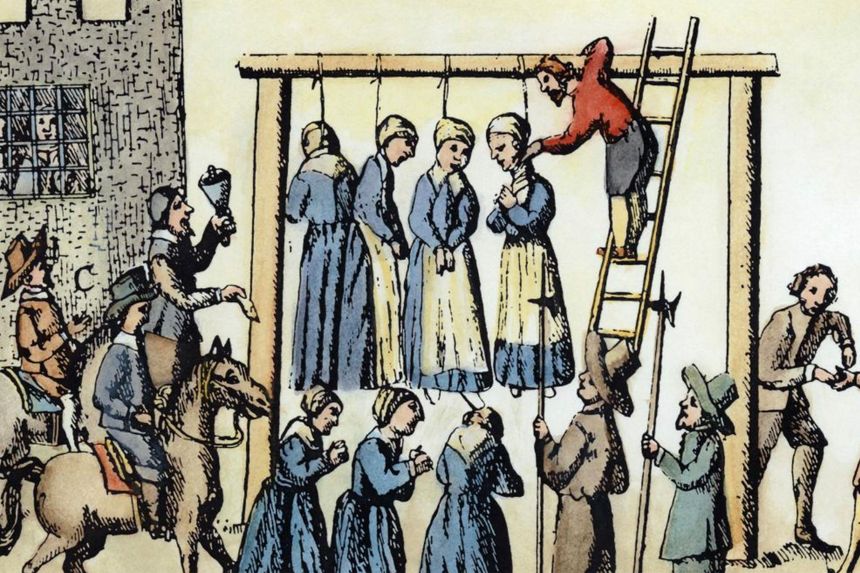
As the witch trials of Salem went on in 1693, 7 months after beginning in 1692, the local authorities, as well as the Governor of the Province of Massachusetts Bay, allowed the madness and witch hysteria punishments to continue so as many more innocent people would be executed. However, the Governor Only Stopped the Trials when his wife was accused. When Sir Phip’s wife wife was accused of witchcraft, the Governor worked rapidly to eliminate spectral evidence from the trials. Spectral evidence is a form of legal evidence based upon the testimony of those people who claim to have experienced visions. During a matter of weeks, the trials were over and those extremely unfortunates awaiting trial or execution were released.
In 1702, the General Court of Massachusetts declared the witch trials to be unlawful. The Colony passed a bill overturning the witchcraft convictions, mentioning 22 individuals by name, in 1711. In 1957, a resolution (later amended in 2001), the State of Massachusetts exonerated additional victims. At the 300th anniversary of the terrible, fatal events that started in 1692, a park was dedicated in Salem and a memorial was set in Danvers. The city of Salem, Massachusetts dedicated the Proctor’s Ledge Memorial, where the so-called witches were hanged, to the memories of the victims there in 2017. On May 26, 2022, the last victim formally charged with witchcraft during the Salem Witch Trials of 1692 to 1693, Elizabeth Johnson Junior, who was 22 years of age when indicted, has been officially exonerated by the Massachusetts Senate, thanks to a dogged band of eight grade schoolers and their teacher, Carrie La Pierre who did an extensive research and a very strong letter writing campaign to government officials. Elizabeth Johnson Junior confessed to her alleged “crimes”, and was sentenced to death, only to be granted a reprieve by the Governor of Massachusetts.
Today in and around Salem, Massachusetts, there are at least 8 museums dedicated to the mass hysteria witch trials of 1602 and 1693. There are life-size stage sets, exhibits, and tours exploring the 17th century Salem Witch Trials, plus witchcraft today. In Salem, Massachusetts, presently, there are a number of people who openly call themselves “witches” or “witches’ and “warlocks”(male witches); and claim to be able to produce supernatural events through alleged magical spells, charms, talismans, amulets, etc. There are numerous occult and metaphysical supply stores that sell witchcraft items, books, and also sell various roots, herbs, and certain special stones, crystals, and perfumes and incenses in and around Salem, Massachusetts.
